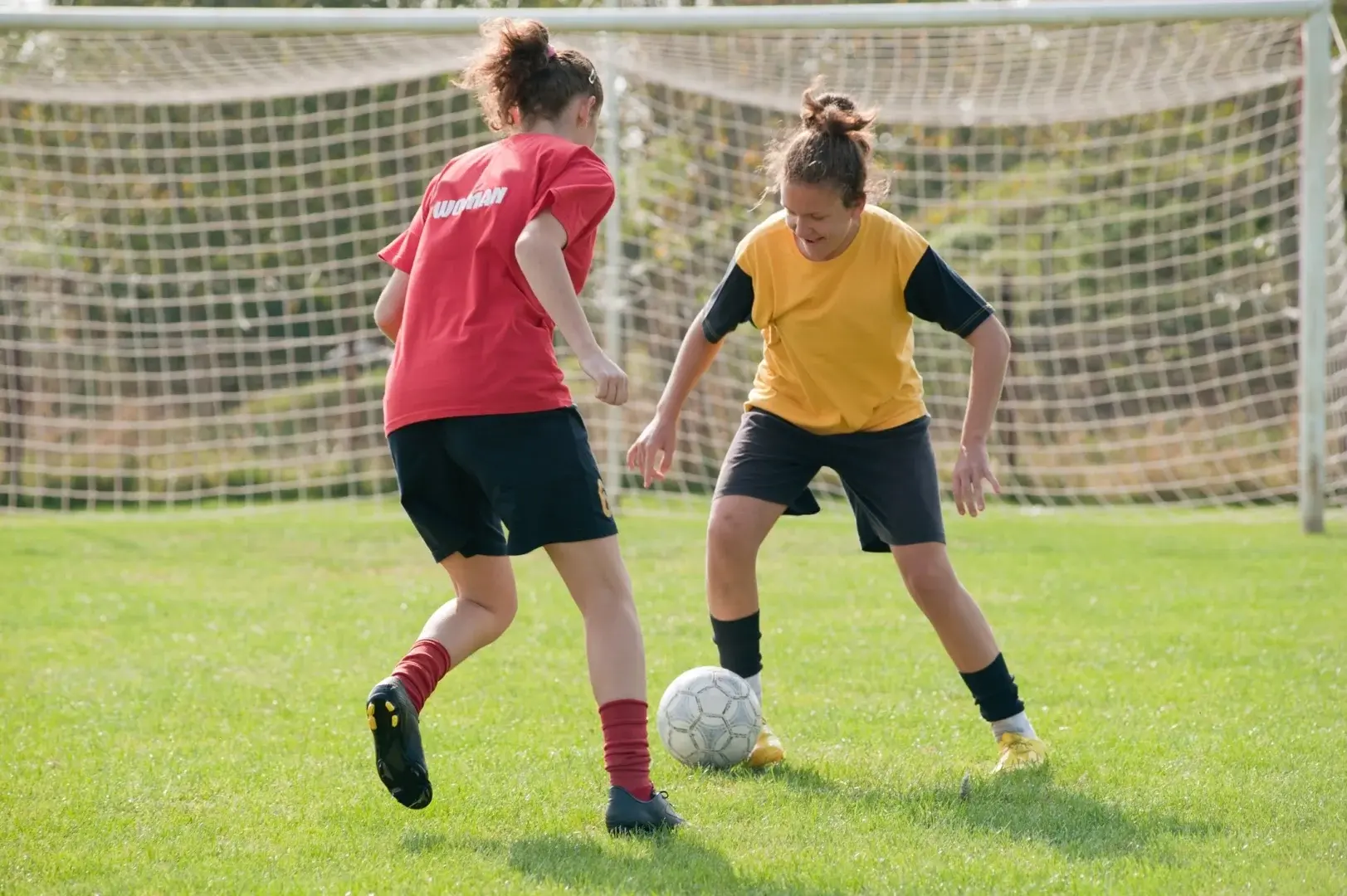An investigation of strength training methods in men’s vs. women’s football
While female participation in soccer (football) is booming, much less is known about the strength and conditioning (S&C) support that females get in comparison to males.
- Background & Objective
- What They Did
- What They Found
- Practical Takeaways
- Reviewer’s Comments
- About the Reviewer
- Comments

Original study
McQuilliam, S. J., Clark, D. R., Erskine, R. M., & Brownlee, T. E. (2022). Mind the gap! A survey comparing current strength training methods used in men’s versus women’s first team and academy soccer. Science and Medicine in Football, (just-accepted).
Background & Objective
Typically, soccer has been a male-dominated environment. However, with promising trends in society, more females are getting involved in sport. For example, between 2010-15, female soccer participation increased by 32% globally (HERE). With this increase, females are deservedly being recognised for their skill and professionalism.
Despite the increase in population, coupled with a greater talent pool, much less is known about the strength and conditioning (S&C) support that females get in comparison to males. Therefore, the aim of this study was to analyse this to support best practice.
What They Did
In total, 170 participants (U9-U23) took part in this study from Europe, the USA, and South America. To take part in this study, participants were required to be working within a men’s or women’s first team/academy setting and were currently involved with the S&C provision in the soccer club.
Participants completed a comprehensive online survey lasting roughly 17 minutes, designed to evaluate their participants over six categories. These included:
What They Found
The main findings from this study were:
[optin-monster-shortcode id=”jyyw4xzrpuivfz8gggx4″]
Practical Takeaways
This study found that relatively fewer women received training with free weights (83%) compared to men’s teams (97%). The gap widened when looking at more advanced training modalities, such as Olympic lifting. This highlights an opportunity for current practitioners, where regular CPD on the benefits of strength training for females must be explored by clubs. In this video, Erica Suter highlights the role that strength training can have on not only physical attributes, but on an athlete’s psychological state. Videos like Erica’s serve as a great way to introduce the idea to coaches.
This is important considering that female athletes show comparable improvements following strength work to men (HERE). As women receive relatively less S&C support than males, programmes designed for women’s teams are regrettably a privilege due to their lack of normality and should focus on reducing common injuries. Of these, injury to the anterior cruciate ligament (ACL) (see attached article) is the most common. Strategies to reduce ACL injury include:
Finally, those working with a men’s team have a responsibility to ensure that S&C expertise is discussed and placed into practice across all teams that a club covers. Whilst it is understandable that the complexities of working with a large club (i.e. financial pressure and competition schedule) make it challenging to share knowledge, all involved must make a more conscious effort to upskill and train staff for both performance and equality.
Tom Green’s Comments
“The findings of this study suggest there are key differences in the S&C practices between men’s and women’s teams. The fewer S&C sessions experienced per-week from women’s academy teams highlight either a lack of funding or emphasis placed on strength development and injury prevention in youth football. These findings were not consistent at the first team level, suggesting that they were strictly unique to lower stages of the clubs developmental infrastructure. This is concerning both from an equity standpoint, but also due to the increased recognition that females need to strength train. In the attached podcast, Joslyn Thompson and Andy Vincent discuss the safest ways to do this that are not only fun, but establish long-term behavioural change.
“Despite both sets of coaches having the same qualifications, S&C coaches involved with the women’s teams were more likely to use a subjective load prescription compared to men’s teams. This may lead to athletes either under or over achieving, which in turn, could lead to suboptimal levels of performance or an increased risk of injury and burnout. Future research could look at why these differences exist, using both quantitative and qualitative research to investigate this phenomenon in greater detail.
“Moreover, it would be great to see how academies use long-term athletic development models to influence and shape their programmes for different genders, with honesty about how they negotiate the sex-differences experienced at varied stages of growth and maturation.”
Want to learn more?
Then check these out…
Watch this video
Read this article
Listen to this podcast
Want more research reviews like this?
Every coach understands the importance of staying up-to-date with the latest sports performance research like this, but none have the time, energy, or even enjoys spending hours upon hours searching through PubMed and other academic journals. Instead, your precious time is better-spent coaching, programming, and managing all the other more important aspects of your job.
The solution…
The Performance Digest
The Performance Digest is a monthly summary of the latest sports performance research reviewed by our team of hand-selected experts. We sift through the 1,000+ studies published in the realms of sports performance every, single month and review only those which are important to you. Each monthly issues contains 15 research reviews in all of the following disciplines:
This comprehensive topic base ensures you’re constantly expanding your knowledge and accelerating your career as quickly as humanly possible. The reviews are also hyper-focused, 1-page summaries, meaning there’s no jargon or wasted time. We cut right to the chase and tell you what you need to know so you can get back to coaching.
Join the thousands of other coaches who read it every, single month. Click here to get instant access for free…


